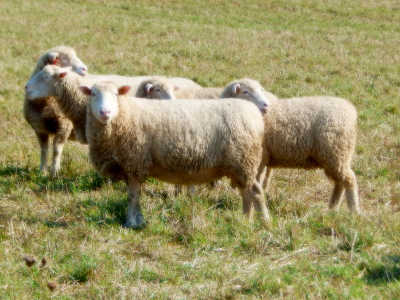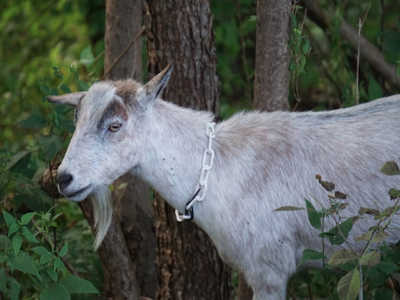In Pennsylvania, producers are required to identify their sheep and goats with an official scrapie identification method before moving them off their farms. That’s important now that lambing and kidding season is in full swing, according to a Penn State Extension educator.
“This includes animals transported within the state as well as those transported across state lines,” said Melanie Barkley, livestock extension educator based in Bedford County. “The Pennsylvania law regarding scrapie identification is more stringent than the U.S. Department of Agriculture national requirement that sheep 18 months and older must have a scrapie ID if they leave the farm of origin.”
For most producers, this means animals will have a scrapie tag in their ear, Barkley added. If sheep or goats don’t have one and they are transported across state lines, producers could be fined by the USDA.
Scrapie is a fatal disease affecting the central nervous systems of sheep and goats, characterized by a lack of coordination, nervousness, aggressiveness and intense rubbing. It is thought to be caused by a virus-like agent known as a prion. This animal-identification program enables officials to trace suspected and confirmed cases of scrapie back to the farm of origin.

As of Jan. 1, 2009, all sheep and goats raised in Pennsylvania must be identified with official scrapie ID if they leave the farm property or properties where they are housed. There are several forms of official scrapie ID available to producers. New producers can obtain up to 80 free, plastic flock ID tags through 2020 or until available funds for the tags have been spent.
New producers in Pennsylvania can obtain tags or a premises ID by calling 717-836-3235 or emailing asteck@pa.gov. Each farm is assigned its own individual premises ID. Established producers can purchase ear tags from sources that have been approved by USDA. A list of these suppliers with their contact information can be found at this website.
Two other forms of official ID are a readable registration tattoo that matches the registration certificate and a USDA-registered scrapie tattoo that is readable.
Producers who send animals to livestock markets without tags can have the market tag the animal with a blue, slaughter-only tag or an orange tag, as long as the owner is willing to sign a statement that animals came from his or her farm.
Producers who market animals without official identification can expect their contact information to be reported to the Pennsylvania Department of Agriculture. Follow up from the department will remind producers to tag animals. Repeatedly sending animals to market without official identification could lead to expensive fines, Barkley warned.
“This identification plan is important because it is part of the National Scrapie Eradication Program that was started in 2000,” she said. “It seeks to eradicate scrapie in the United States to meet the World Organization for Animal Health criteria. The program has reduced the prevalence of scrapie by more than 99%, but a limited number of cases are confirmed each year through a surveillance program.”
